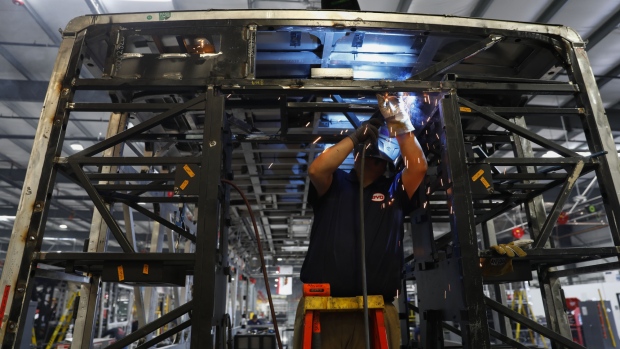Sep 27, 2018
U.S. economy grew at unrevised 4.2% pace in second quarter
, Bloomberg News

The U.S. economy grew in the second quarter at an unrevised 4.2 per cent pace, the fastest since late 2014, indicating a solid foundation for this quarter, Commerce Department data showed Thursday.
Highlights of Second-Quarter GDP (Third Estimate)
-Gross domestic product grew at 4.2 per cent annualized rate, the fastest since 3Q 2014 (matching est.)
-Consumer spending, biggest part of the economy, grew at an unrevised 3.8 per cent pace (matching est.); upward revision to gasoline and other energy products, downward revision in transportation services
-Gross domestic income, adjusted for inflation, rose 1.6 per cent, revised from a 1.8 per cent gain
Key Takeaways
The revisions for GDP, the value of all goods and services produced in the U.S., are largely in sync with more recent data that show the world's largest economy is expanding at a steady, albeit more moderate, pace this quarter.
The details were mixed. Inventories subtracted 1.17 percentage point from growth, revised from a previously reported 0.97-point drag, mostly on nonfarm stockpiles.
Household purchases, which account for about 70 per cent of the economy, remained the main driver of growth. They contributed 2.57 point, up from a previously estimated 2.55 point.
In addition to tax cuts signed by President Donald Trump, a robust job market is helping consumers while strong profits are supporting corporate America. The steady growth rate will offer the White House further opportunity to claim credit for the robust expansion.
At the same time, a trade war with China has triggered higher tariffs on imports, supply-chain disruptions, and uncertainty about when the trade tensions may be resolved. Borrowing costs will continue to tick up; the Federal Reserve, which lifted interest rates Wednesday, said growth and job gains have recently been “strong” as it projected further rate hikes over the next year.
The Atlanta Fed’s GDPNow tracking estimate for third-quarter growth was at 4.4 percent as of last week, while the median forecast in a Bloomberg survey of economists showed a 3 per cent pace.
Price data in the report showed inflation is moving in line with the Fed’s 2 per cent goal. Excluding food and energy, the Fed’s preferred price index that is tied to personal spending rose at a 2.1 per cent annualized rate, revised from 2 per cent.
Other Details
-Corporate pretax profits rose 7.3 per cent from a year earlier, the most since 2016, revised from 7.7 per cent; they climbed 3 per cent from prior quarter, revised from 3.3 per cent
-Net exports added 1.22 percentage point to GDP growth, revised from a 1.17-point boost
-Nonresidential fixed investment -- which includes spending on equipment, structures and intellectual property -- increased 8.7 per cent, revised from 8.5 per cent; spending on business equipment rose 4.6 per cent, revised from 4.4 per cent
-Residential investment declined at a 1.3 per cent rate, revised from 1.6 per cent drop
-Government spending increased at a 2.5 per cent rate, revised from a 2.3 percent gain; the figures reflected upward revisions for state and local outlays, primarily in structures, according to the report
-GDP report is the third of three estimates for the quarter